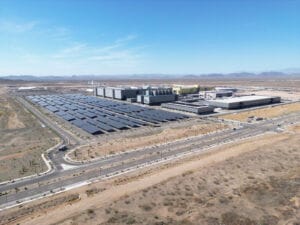Technology continues to evolve and influence every aspect of people’s lives. Its speed of advancement has made it hard for someone to predict what may come next, especially when it comes to distribution, warehousing, and logistics. For instance, the emergence of smart warehousing has significantly changed the warehousing sector. The following are key areas whereby the emergence of warehousing technology has helped to improve.
Stock Control and Warehouse Operations
Adopting software that automates logistics operations is essential, particularly for facilities with machines depending on technology and big data. For instance, warehouse management systems or WMSs coordinate and handle logistics processes to facilitate easy access by warehouse operators and other selected players in the supply chain. Additionally, the sorting of data enhances reporting and planning processes.
Moreover, warehouse technology helps the WMS to coordinate digital aspects of a facility, including the Manufacturing Execution Program (MES) or enterprise resource planning (ERP). This allows companies to sync picking, storage, and goods receipt activities with other processes like production line sequencing.
Automated Storage and Retrieval Systems (AS/RS)
Automated storage and retrieval systems are made using computer-controlled systems to place and retrieve goods from a particular warehouse area automatically. They usually carry out this task accurately, precisely, and with speed. Additionally, these systems enhance warehouse operations in various ways, including:
• Providing solid long-term protection of goods
• Creating a location to gather parts for assembly
• Using software controls to provide an enclosed storage setting that enhances security
Various technological solutions can be used to speed up warehouse operations. For instance, box warehouses dealing with high order volumes use automated storage and retrieval systems like the Shuttle System. When connected directly to a warehouse management system, the system uses a set of racks whereby shuttles remove boxes and transfer them on a lift. This enhances the movement of goods across different areas of the warehouse space. A conveyor line is then used to move the particular products to their designated picking areas.
Coordination of automated operations using warehouse management systems facilitated by technology like big data and predictive analytics enables the system to automate storage based on the established criteria and rules of the logistics manager. The system can also recommend a new storage position according to the expected demand for each load.
Movement of Loads
The emergence of warehousing technology has significantly improved the movement of loads by replacing manual handling machines with automated conveying systems. An excellent example of these systems is conveyors for boxes or pallets. Adding these systems to commercial space for rent can speed the movement of goods to the production lines or pickup locations. Using robots and AGVs to move goods using technology guided by wires or lasers automatically has also helped change the warehousing sector.
Moreover, technologies like IoT and AI have also played a crucial role in developing AMRs (autonomous guided robots). These machines can move around a warehouse without human help as they transport goods to various destinations by interpreting their environment. They are usually connected to warehouse management software to aid their movement.
Automated Picking
Warehousing technology plays a significant role, particularly when processes prone to operator errors or expensive ones are involved. For instance, order picking is an activity that can be enhanced using automated solutions. This includes technologies like voice picking guides which are coordinated by warehouse management systems.
Moreover, labor-intensive order picking and the need for speed in the shipment of products have made e-commerce a crucial aspect of warehousing development. This has motivated research to create new technologies to improve the order fulfillment process. Warehouses with larger order volumes usually use collaborative robots (cobots) or industrial machines to boost throughput when it comes to picking orders. These machines are typically used in operations involving bulky goods.
Lastly, automation of the picking process can be complemented using technologies that move products to their pickup locations, like conveyor lines that use one or several stacker cranes. Mounting anthropomorphic robots in facilities dealing with bulkier products can help maintain productivity in order to pick.
Nowadays, technology has significantly influenced business operations in various ways. Implementation of appropriate technology can significantly enhance business growth by increasing sales, enhancing security, reducing operation costs, and improving management. Moreover, warehousing technology has played a significant role in various ways, as seen above. This has helped to modernize and improve the sector.




